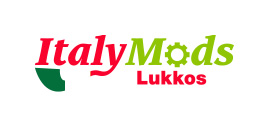tROAS
Glossaries
| Term | Definition |
|---|---|
| tROAS | tROAS is the acronym for Target Return On Ad Spend. It is an automated bidding strategy (Smart Bidding), primarily used on platforms like Google Ads, that automatically adjusts bids to maximise conversion value rather than just the number of conversions. The advertiser sets a desired percentage return, and the algorithm attempts to achieve that average ROAS (Return On Ad Spend). What it is for / Why it is importantThis strategy is used to optimise advertising spend not to gain the maximum number of sales, but to gain the sales with the highest economic value, while maintaining a predefined level of profitability. It is essential for companies, especially e-commerce businesses, which have products with widely varying prices and margins, as it allows them to concentrate the budget on users most likely to generate high revenues. When it is used / In what context is it usefultROAS is used in Performance Marketing and e-commerce advertising. It is ideal for campaigns where the goal is not simply to "acquire a customer" (as with tCPA), but to "maximise turnover" for every pound spent on advertising. To work effectively, it requires accurate tracking of conversion value (e.g., the basket value) and a sufficient history of data. Practical ExampleAn electronics e-commerce store sets a tROAS of 400%. This means that, for every £1 spent on advertising, the company wants to generate £4 in revenue. The platform (e.g. Google Ads) will show ads more aggressively to a user searching for "8K Smart TV" (high value) and more conservatively to someone searching for "HDMI cable" (low value), in order to maintain the average revenue at 400% of the spend. Extra InsightThe key difference between tCPA and tROAS is the objective: tCPA focuses on the cost of a single action (e.g. £20 per sale, regardless of value), while tROAS focuses on the return in terms of turnover (e.g. £4 in revenue for every £1 spent). tROAS is generally considered a more advanced, profit-oriented strategy. |

 IT
IT  EN
EN 































































